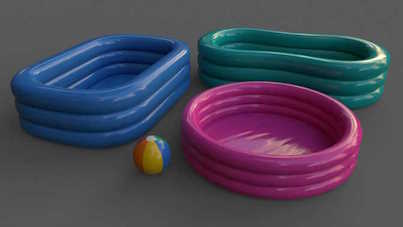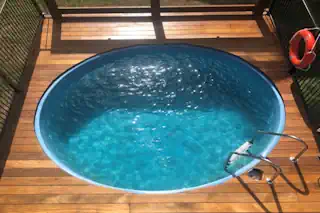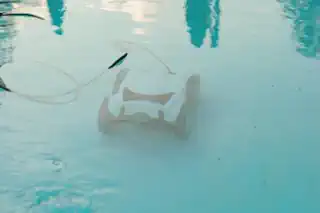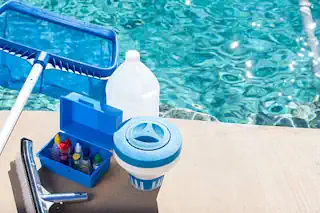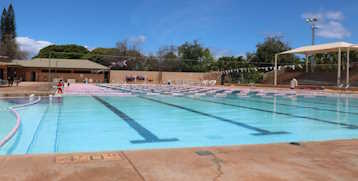The Essential Guide to Swimming Pool Safety Considerations
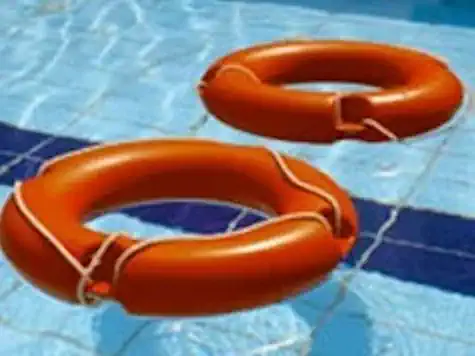
Hello, dear pool owners, parents, and home safety enthusiasts! Today, we’re diving deep into a topic that’s close to many of our hearts—swimming pool safety considerations. Whether you’re splashing around with your family on a sunny day or enjoying a quiet evening by the poolside, these safety tips should always be top of mind. We know these are not fun to discuss but these steps could help prevent drowning of a loved one.
The Unsettling Reality: Statistics on Drowning and Pool Accidents
Did you know that drowning is a leading cause of accidental death among young children? The numbers are more than just statistics; they represent families who have faced unimaginable losses. It’s a stark reminder of why swimming pool safety cannot be taken lightly.
According to the World Health Organization, drowning cases are the third leading cause of unintentional injury death worldwide, accounting for 7% of all injury-related deaths.
In the United States, the Centers for Disease Control and Prevention (CDC) reports that about ten people die from unintentional drowning every day, with two of these being children aged 14 or younger.
The CDC also notes that for every child drownings, another five receive emergency care for nonfatal submersion injuries.
Nearly 80% of people who die from drowning are male.
The risk of drowning in home swimming pools is highest among very young children aged 1 to 4 years old; in fact, more than 50% of drowning incidents in this age group occur in residential swimming pools.
Lack of swimming ability, lack of barriers to prevent unsupervised water access, and lack of close supervision are significant risk factors for drowning, according to the CDC, especially for small children.
Alcohol use is involved in up to 70% of deaths associated with water recreation, nearly a quarter of emergency department visits for drowning, and about one in five reported boating deaths.
Navigating the Waters of Pool Safety Regulations
Understanding the guidelines and regulations surrounding pool safety is your first line of defense against potential accidents. Various jurisdictions have specific rules, but common ground includes fencing requirements, secure gates, and sometimes even alarm systems. Familiarizing yourself with these can make all the difference.
Essential Pool Safety Regulations: A Handy Checklist
To help you create a safer environment around your swimming pool, here’s a list of some of the most common swimming pool safety tips and regulations you should be aware of:
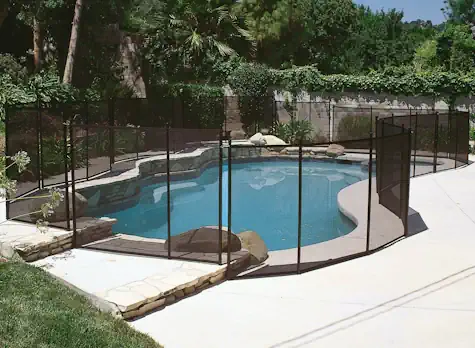
Fencing Requirements: A robust and secure fencing system around the pool area is often mandated. Fences should be at least four feet high with self-closing and self-latching gates that open outward. Fencing should prevent access without your approval and supervision.
Pool Alarms: Installing alarms on pool gates and pool covers can alert you to unauthorized access, underscoring the importance of constant vigilance.
Pool Covers: A safety cover that can support an adult’s weight is recommended to prevent accidental falls when the pool is not in use.
Life-Saving Equipment: Keeping life-saving equipment such as life rings or life preservers, reaching poles, and an easily accessible first aid kit can be crucial during an emergency.
Proper Signage: Displaying signs that outline pool rules, depth markings, and emergency procedures can provide clear guidance and essential information to pool users.
Educational Programs: Encouraging swimming skills, swim lessons and water safety courses for children and adults ensures that everyone knows the basics of water safety and emergency response.
Inspections and Maintenance: Regularly inspecting the pool area for hazards and keeping up with maintenance tasks like checking the pool’s chemical levels and safety mechanisms is crucial for ongoing safety.
Supervision Responsibilities: Designating an adult as a “Water Watcher” during pool use times ensures that someone is always actively supervising swimmers, minimizing the risk of accidents. Never leave inexperienced swimmers or a child unattended in a pool area.
Lighting Requirements: Adequate lighting for evening and night-time swimming enhances visibility, reducing the chances of accidents due to poor lighting conditions.
By adhering to these regulations and practices, you’re taking significant steps towards providing a safer swimming environment, ensuring peace of mind for you and your loved ones.
The Shield of Protection: Physical Barriers and Safety Covers
Imagine a safety net that’s always there, even when you’re not looking. That’s what physical barriers like fences and safety covers offer. A pool fence that’s at least 4 feet high that is self-closing with a self-latching gate can significantly reduce the risk of accidents. And safety covers? They’re like the superhero capes of the pool world, ready to guard your pool when it’s not in use.
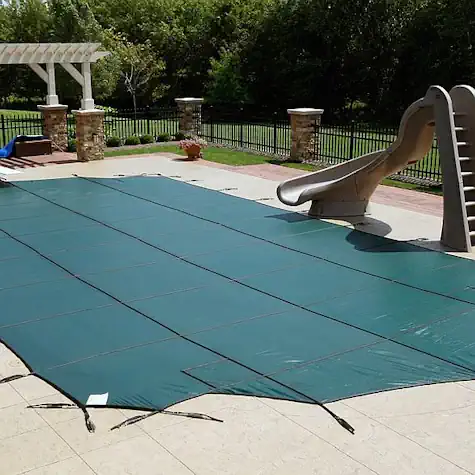
When it comes to safeguarding your backyard pool and area, investing in the right physical barriers and safety covers can make a world of difference. Here’s a list of some excellent options to consider:
Mesh Pool Fences: These are child-proof and can be easily installed or removed. They’re also transparent, so you can keep an eye on the pool area while maintaining visual appeal.
Glass Pool Fences: Offering an unobstructed view of the pool, glass fences are secure and aesthetically pleasing. They require minimal maintenance and are highly durable.
Vinyl Fences: Known for their sturdiness and low maintenance, vinyl fences can provide a solid visual barrier, enhancing the overall safety of your pool area.
Safety Pool Nets: Ideal for child safety, these nets are installed over the pool and can support the weight of a child, preventing accidental falls into the water.
Automatic Pool Covers: These motorized covers can be easily operated with a remote or switch. They provide a secure barrier when the pool is not in use and also help maintain water quality.
Manual Pool Covers: More economical than automatic covers, these require manual operation but still offer significant safety benefits by covering the pool when not in use.
Mesh Safety Covers: These covers are anchored around the pool and can support an adult’s weight. They’re particularly useful for winterizing pools and preventing debris accumulation.
Solid Safety Covers: Unlike mesh covers, solid covers completely block sunlight and debris, making them ideal for long-term pool closure and maintenance.
Removable Pool Fences: Offering flexibility, these fences can be installed around the pool’s perimeter and removed when needed. They’re perfect for families who may want to adjust their pool area setup.
Barrier Gates with Alarms: These gates come equipped with alarms that sound if opened unexpectedly, providing an additional layer of security and peace of mind.
By choosing the right combination of these barriers and covers, you greatly enhance the safety of your swimming pool, protecting your loved ones while enjoying some fun in the sun.
Lifesaving Gear: Pool Safety Equipment
From pool alarms that alert you of unexpected water entries to personal flotation devices for the little swimmers, the range of safety equipment available today is impressive. Investing in these can add an extra layer of safety, giving you peace of mind.
Must-Have Lifesaving Equipment
To ensure your swimming pool remains a safe haven for everyone, consider having the following essential safety equipment on hand:
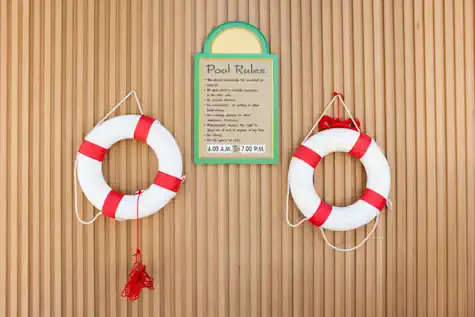
Pool Alarms: Ideal for detecting unauthorized access or unexpected water entries.
Life Rings: Easily throwable, these can help someone in distress stay afloat until help arrives.
Reaching Poles: Useful for pulling someone to safety without you having to enter the water.
Rescue Tubes: These provide buoyancy and are often used by lifeguards to secure a swimmer in distress.
First Aid Kit: Comprehensive kits should include bandages, antiseptics, and other essentials to treat minor injuries.
Shepherd’s Crook: A long pole with a curved end that can be used to reach and pull a person out of the pool.
Safety Rope and Float Line: Used to section off the deep end of the pool, providing a clear visual boundary.
CPR Instructions: Displaying CPR instructions in a visible location can be crucial in emergency situations.
Emergency Phone: Having a phone nearby ensures rapid contact with emergency services if needed.
Personal Flotation Devices (PFDs): Life jackets and floaties for young children or weak swimmers to wear while in the pool.
Poolside Emergency Button: A button that, when pressed, can alert others in the vicinity or even people inside the house about an emergency situation.
By equipping your pool area with these items, you’ll be well-prepared to handle emergencies and maintain a safer environment for all.
Crystal Clear Safety: Pool Maintenance for Safety
A well-maintained pool is a safer pool. Regular checks and balances, like ensuring the right chemical levels and keeping the deck free of slip hazards, play a crucial role in preventing accidents. It’s not just about keeping the water sparkling; it’s about ensuring it’s safe for everyone.
Essential Pool Maintenance Items for Safety
Maintaining your pool’s safety means staying on top of regular upkeep and ensuring everything runs smoothly. Here’s a list of common pool maintenance items you should have:
pH and Chlorine Test Kits: Regularly test the water to maintain the correct pH and chlorine levels, ensuring it’s safe and free of harmful bacteria.
Pool Skimmer: Essential for removing leaves, bugs, and debris from the water surface.
Pool Vacuum: Keeps the pool floor clean by sucking up accumulated dirt and debris.
Pool Brush: For scrubbing the pool walls and floor to prevent algae buildup.
Filter Cleaner: Ensures your pool filter functions efficiently by removing trapped dirt and oils.
Chemical Dispensers: Floats around the pool, distributing chlorine or bromine to keep the water sanitary.
Shock Treatment: Helps in addressing cloudy water and eliminating contaminants that regular chlorine treatments might miss.
Pool Cover Cleaner: Specialized cleaner to maintain and protect your pool cover, ensuring it lasts longer.
Algae Preventative: Prevents the growth of algae, keeping the water clear and safe.
Thermometer: Monitors water temperature to help maintain a comfortable and safe swimming environment.
Pump Basket: Collects debris before it reaches the pump, protecting it from clogs and damage.
Deck Cleaner: Special detergent or solution to keep the pool deck clean and free from slippery algae or mildew buildup.
Replacement Pool Liner Patches: For quick fixes in case of tears or punctures in the pool liner, preventing leaks.
By incorporating these maintenance items into your regular pool care routine, you can create a safer, cleaner, and more enjoyable swimming environment for all.
A Family Affair: Educating the Family on Pool Safety
Safety lessons can be fun, too! Teaching your kids and any guests about pool safety creates a culture of awareness and responsibility. Simple rules like no running on the deck, swimming with a buddy, and understanding the depth markers can save lives.
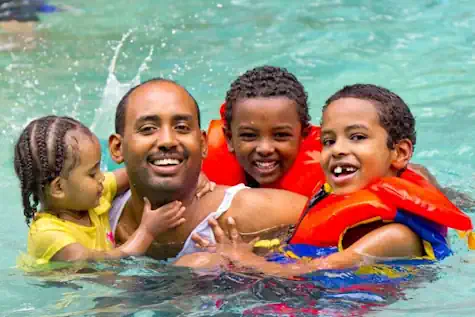
Common Pool and Water Safety Rules
To ensure everyone enjoys the pool safely, it’s essential to establish and follow common safety rules. Here’s a handy listicle of rules to keep in mind:
No Running: Pool decks can be slippery when wet, so always walk to prevent accidents.
Always Swim with a Buddy: Never swim alone. Having a friend or adult nearby ensures help is available if needed.
No Diving in Shallow Water: Diving should only be done in areas where it’s safe and permitted. Always check the depth markers. The shallow end is not the play end for bigger swimmers.
Stay Within Designated Swim Areas: Respect ropes and float lines that separate deep and shallow sections.
Keep Away from Pool Drains: Teach children to avoid drains, pipes, and other openings that can create strong suction.
Supervise Children Constantly: Never leave children unattended in or near the pool, even for a moment.
Use Sun Protection: Apply sunscreen liberally and wear hats and UV-protective clothing to prevent sunburns.
Listen to Lifeguards: Follow the instructions of lifeguards or pool supervisors to maintain a safe environment.
No Glass Containers: Glass can break easily and become a hazard around the pool area.
Stay Hydrated: Encourage everyone to drink plenty of water, as swimming can be physically demanding and dehydration is a risk.
Learn CPR: Basic CPR knowledge can be lifesaving in an emergency situation.
Secure the Pool Area When Not in Use: Ensure that pool covers, barriers, and alarms are in place to prevent unauthorized access.
By adhering to these rules, you create a safer and more enjoyable pool experience for everyone involved.
Wrapping Up
Swimming pool safety considerations are not just another item on your to-do list; they’re essential practices that safeguard your loved ones. By implementing the pool ownership measures we’ve discussed, you’re not just creating a safer environment; you’re nurturing a space where countless happy memories can be made without worry.
Remember, every splash in a pool should echo with joy, not caution. With the right precautions, we can ensure our swimming pools remain the sources of laughter and relaxation they’re meant to be. Stay safe and happy swimming!
Frequently Asked Questions (FAQ)
What are the most important pool safety items to have?
Some of the most crucial pool safety items include life-saving equipment such as life rings and flotation devices, a pool cover to prevent accidental falls, and safety signs that clearly outline pool rules. Additionally, having a poolside emergency button to alert others in case of an emergency can be invaluable. Swimming lessons, learning cpr, and other pool and spa safety measures are invaluable knowledge for you to have.
How often should I test the pool water?
It’s recommended to test your pool water at least twice a week, especially during the swimming season. Maintaining the correct pH and chlorine levels ensures the water is safe and free of harmful bacteria. This is especially true for above-ground pools since they tend to have warmer water.
What should I do if I notice algae in my pool?
If you observe algae buildup, it’s essential to act quickly. Use a pool brush to scrub the affected areas, apply an algae-preventative solution, and consider shocking your pool to eliminate any residual contaminants. Regular cleaning and proper chemical balance can prevent future growth.
How can I teach my children about pool rules and safety?
Teaching children about pool safety can be both informative and fun. Involve them in safety drills, use visual aids like safety signs, and go over key rules such as no running on the deck, swimming with a buddy, and understanding the significance of depth markers. Most importantly, lead by example and always supervise them closely.
Is it necessary to have a pool cover cleaner?
Yes, maintaining your pool cover is vital for its longevity and effectiveness. A specialized pool cover cleaner helps remove dirt, debris, and any chemicals that might degrade the material, ensuring your cover remains in top condition to protect your pool.
Why is it important to learn CPR as a pool owner?
Understanding CPR can be lifesaving in emergencies involving water. In the critical minutes before professional help arrives, effectively administering CPR can significantly increase the chances of survival and recovery for a drowning victim.
By addressing these common questions, we hope to enhance your understanding of pool safety and maintenance, ensuring an enjoyable and secure environment for everyone.
